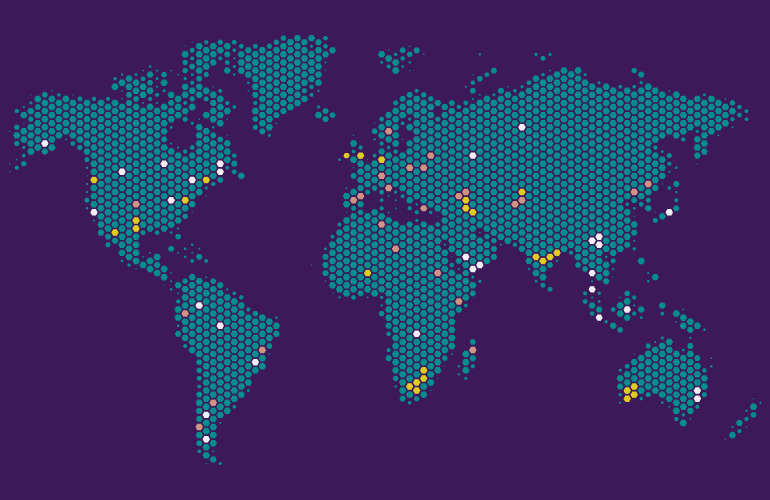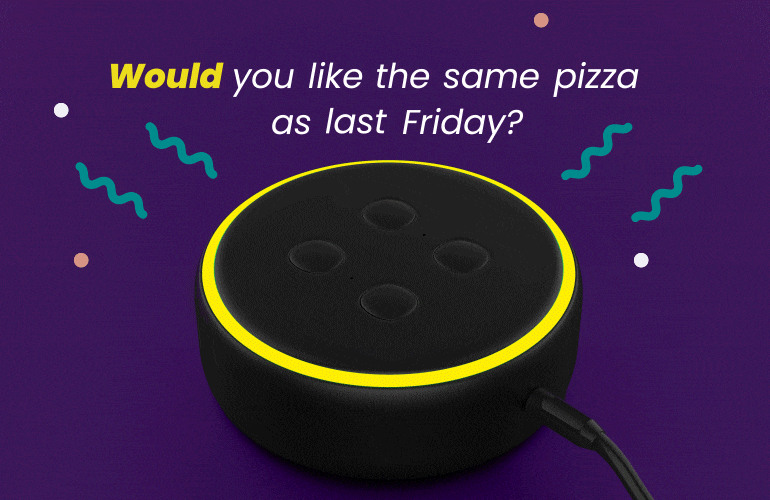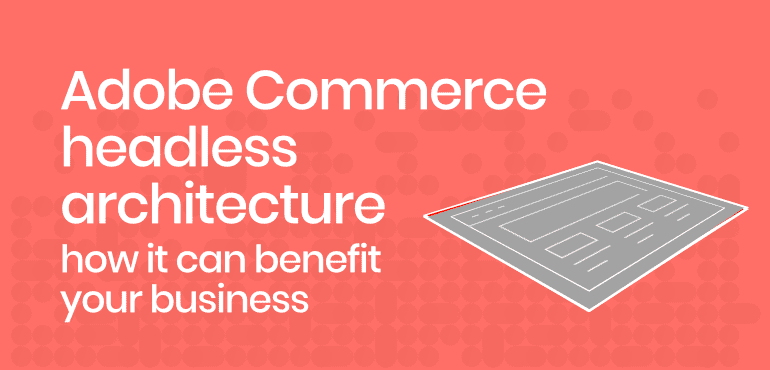The future of eCommerce: part 1

Article topics
- The retail landscape is changing
- What exactly is headless commerce?
- How is headless changing eCommerce?
- Faster performance Faster development
- Application Programming Interface
- Headless commerce in action
- Better shopping experiences
- Final thought
There are as many ideas about the future of eCommerce as people writing on the subject. Ask 20 people ‘what’s the future of eCommerce?’ and it’s likely you will get 20 different answers. However, new trends are beginning to emerge that are having a significant impact on the evolution of eCommerce.

The retail landscape is changing
The coming revolution in eCommerce, and shopping generally, is largely centred around how consumers interact with brands and retailers, and the means by which they purchase products and services.
Consumers are more active then they have ever been and are demanding more from their shopping experiences. Brands and businesses are having to evolve to meet those demands or risk being left behind by their competitors. Consumers want more product choice, less friction in their buying journeys and more ways to interact with brands both online and offline. They want quicker page load and individualised shopping experiences. They want faster delivery and faster gratification.
Consumers expect to shop via a range of channels, UIs and other touchpoints. They want to interact with brands via the most convenient method at any given moment or location. For example, frictionless payment methods, smart voice interfaces, AI chatbots, in-store AR and the internet of things (IoT) are giving consumers more ways to shop. But adding new consumer UIs and touchpoints to traditional (non-decapitated) eCommerce systems can be complex, slow and expensive, and as a result some eCommerce brands and businesses are unable to capitalise on the fast-evolving consumer landscape. One solution to the problem of slow response to fast changing consumer expectations is to separate the front and backends of traditional, or unified, eCommerce systems, making them more flexible, agile and scalable. This is called headless content management, or headless commerce.

What exactly is headless commerce?
Headless commerce is concerned with the dual architecture of unified eCommerce systems—it’s the decoupling of the frontend customer experience from backend services infrastructure. Headless detaches consumer-facing UI from the backend services that drive eCommerce.
There isn’t anything inherently wrong with unified eCommerce. It provides consumers with outstanding shopping experiences and enables retailers to successfully manage their unique and often complex businesses. What traditional eCommerce is not good at is responding to active consumer journeys becoming more fragmented, and the divide between online and offline shopping beginning to blur. A headless approach enables brands and businesses to react faster to change and be agile enough to give consumers the shopping experiences that they demand.

How is headless changing eCommerce?
Being able to quickly adapt to changing markets and embrace emerging technologies, the headless commerce approach is having a significant impact on brands, businesses and consumers. Developers working with traditional eCommerce can encounter design constraints. To make changes to a system requires time: to edit the database, update code and amend frontend UI. The complexities of a unified eCommerce system can be messy and difficult to manage—changing one element in a complex system can have unforeseen knock-on effects for other parts of that system.
Removing the frontend (the head) of a unified eCommerce system, headless enables frontend developers to design UI/UX from the ground; they are freed from the constraints of being tied to the backend.
eCommerce brands and businesses need to consider the whole consumer journey and deliver consistent shopping experiences across channels, UIs and other touchpoints. Headless enables brands and businesses to deliver richer shopping experiences seamlessly interweaving content with commerce.

Faster performance – Faster development
Consumers want and expect fast load times. It’s vital for consumer engagement. Just a 1 second delay in page-load results in a 22% decrease in conversion rate. A 3 second delay means shedding 53% of webstore visitors. In other words, if an eCommerce business turns £100,000 per day, a 1 second delay in load speed will cost £2.5 million a year.
These figures are for 2016. If we look at 2013 figures, they are lower. That’s because consumers then expected slower page-load and were willing to wait longer before leaving a page. Look the other way, a few years into the future, and the opposite is true—consumer patience is running shorter, with 22% decrease in conversion today expected to be nearly 60% by 2021. Using single-page application and asynchronous loading helps, but eCommerce still needs to be faster.
Traditional eCommerce development is too slow. Expanding to new channels, UIs and other touchpoints with a unified eCommerce platform is time consuming, it makes scaling problematic and takes more development work and time. With headless commerce, content is sent via API to any consumer interface, drastically reducing the time it takes to get new products to market.

Application Programming Interface
The key to how headless commerce works is the Application Programming Interface (API). Silent eCommerce has been around for a long time with transactions taking online via API. For example, when a headless printer orders its own ink cartridges without human interaction— the API acts as a UI for other software.
Headless is about background processes feeding data to independent frontend applications via API and vice versa. Services such as database, pricing, cart, pay services and security, run invisibly in the background while the frontend interfaces with consumers. The frontend and backend speak to each other via the API rather than being of the same unified system.
Using API, shopping processes can be shaped around consumer expectations and behaviour. This offers brands and businesses greater flexibility and agility because they can adapt to where consumers will be and how they choose to shop in any given context: mobile app, a digital kiosk at an event, IoT or a popup webstore anywhere in the world.

Headless commerce in action
An example of how headless commerce can be applied in the real world, let’s take a fashion brand that opens up a physical store in a new country. To maximise impact and profit the brand wants to supplement the launch by opening a new local webstore at the same time. That will require translations, new payment methods, country-specific delivery options and local cultural considerations.
By using headless via API the brand can create translated content, add new payment methods, connect to local logistics and marketing opportunities without having to change the backend. That saves time and costs for building a completely new webstore and enables the brand to make its launch across channels and touchpoints.

Better shopping experiences
In the IoT age, when eCommerce retailers need to be able to deliver content to things like smart watches, smart speakers and even smart appliances, headless commerce architecture enables them to adapt to changes and push content to new platforms. Rather than waiting for backend to catch up, headless enables brands and businesses to move into new channels, UIs and other touchpoints without delay.
Increasingly, consumers are looking for inspiring shopping experiences that go beyond simply finding product, price and availability. They demand more engaging content such as video reviews, product stories, a more entertaining consumer experience. Through this type of content, brands can build an emotional connection with their customers that exceeds the transactional and becomes more relational, more emotional.
Decoupling frontend and backend helps brands and businesses create omnichannel shopping experiences that consumers are beginning to expect. A headless content management system will help project content anywhere. For brands and businesses that means delivering products, product videos or blog posts to any channel or touchpoint quickly and relatively cheaply. This will enable brands and businesses to sell through UIs such as Alexa Skills, digital signage, progressive web apps and even through refrigerators with screens, just like a printer ordering its own consumables.

Final thought
When headless commerce is well-managed, adding new channels, UIs and other touchpoints becomes as simple as adding new building blocks. Frontend and backend developers can work on specific parts of an eCommerce system without needing to consider the system as a whole. Faster development and delivery of services to new channels and touchpoints to benefit consumers is where the potential of headless lies—creating true omnichannel experiences.
API that serves a mobile shopping app and the digital shelf display today could easily serve new touchpoints tomorrow. Not having to modify the backend accelerates time-to-market, making brands and businesses more flexible and agile so they can take advantage of the new opportunities that headless affords.
Is your business omnichannel-ready? Get in touch with one of our eCommerce specialists today for a chat about fast, flexible headless commerce and how your business can capitalise on fast-changing consumer trends.


 Back
Back
